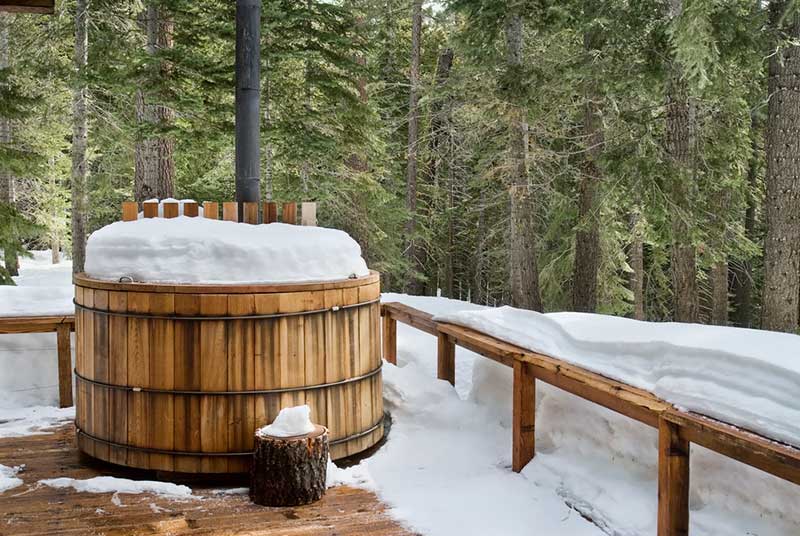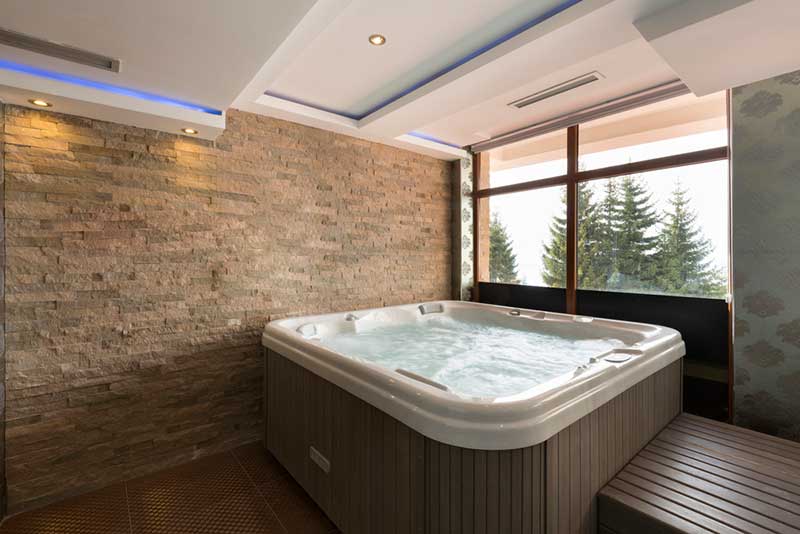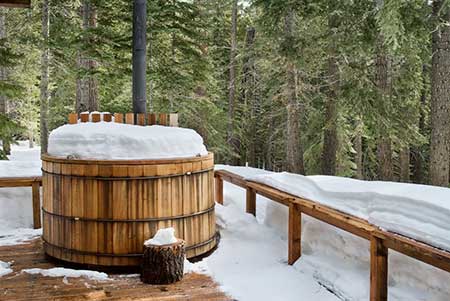
Hot tub heaters are vital components as they are obviously responsible for heating the water in the hot tub. Without a working heater a hot tub would be a fairly unpleasant experience! As with most electrical and especially heating components the heating element of a hot tub has a limited life expectancy. So, how long can you expect your hot tub heater to last and what can you do to lengthen it’s life and keep it working efficiently?
I decided to do some research into hot tub heaters and this is what I found out:
So, how long does a hot tub heater last? A hot tub heater lasts for around five years on average. One way to tell if you need a replacement heater is if it’s taking a long time for your hot tub to heat up or get warm enough. However, the heater doesn’t necessarily need to be replaced entirely since it has multiple components inside it.
What Is a Hot Tub Heater?
A hot tub heater is exactly as the name implies; it is the hot tub component that is responsible for heating the water. Essentially, the water passes through a chamber containing the heating element and, as the water comes into contact with the heating element heat is transferred and the water is heated up.
It’s fairly much the same as a domestic kettle!
The process of heating the water from room temperature to a hot tub’s working temperature of 100℉ (38℃) takes around four or more hours. So, it isn’t exactly quick, which is why it is recommended to just leave the hot tub on so that it is always ready. This might sound counterproductive in terms of extending the life of your tub, but as long as the water’s passing through the heater, it will operate safely.
What can seriously damage a heater quickly is if water doesn’t pass through while it is running, creating what is known as a “dry fire,” which overheats it since it isn’t getting any water to keep its temperature in check.
If you are only using your hot tub once in a blue moon, then it makes sense to turn it off; you’ll just have to plan ahead in advance before you step in. However, the best, and most economical plan is to keep it on all of the time. This will be better for the heating element and, assuming that you are using the hot tub on a regular basis, use less energy than heating it up every time you want to use it as well.
When Should You Replace Your Heater?
You should replace your heater when it becomes less effective than it should be. If the usual 4 hours to heat your tub becomes 5, then 6, then 7, you will know it is time for a replacement. This also goes for if the water isn’t getting heated enough at all, which is, of course, frustrating when you are looking forward to relaxing in the evening.

It might be a good idea to get a replacement once your heater has hit the 5-year mark even if it is still working to avoid these negative surprises. Think of it as getting an oil change in a car. Of course, unlike an oil change, this isn’t mandatory; a heater can last longer than 5 years, but for people who use their tubs frequently might want to keep this in mind!
How Much Does a Replacement Cost?
Replacement costs can vary, but it doesn’t always have to be an expensive fix. A new heater can cost $120 for the entire heater or over $30 for individual components such as the temp sensor, which could cause a hot tub to be not heating up enough or randomly fluctuating in temperature. Because every heater has different components inside that could go wrong, it is definitely a good idea to diagnose what is going on before shelling out replacing an entire heater.
The above is for the DIY cost; if you’d rather have the heater professionally repaired/replaced, you are looking at much higher numbers at $350 to $500 depending on the number of hours of labour needed and the cost of replacement parts.
If you are uncomfortable with fixing anything yourself, there is no shame in calling a professional. It’s better to be safe than sorry. Fixing a hot tub can be a DIY job but, if you aren’t confident or your hot tub is still in warranty then calling a professional is a good idea.
If you would like to learn more about diagnosing problems and seeing what needs to be fixed, the video below helps visually demonstrate what you need to know.
Tips for Making Your Hot Tub Heat Faster (and Retaining the Heat)
Sometimes there isn’t anything wrong with the heater itself; rather, the temperature outside the hot tub is affecting how long it is taking for the tub to heat up. This can affect the time it takes to heat up the tub by hours or even cause the water to lose heat as you are using it.
- Hot tub cover. It’s highly recommend to getting a hot tub cover if you don’t have one already. This will trap the heat emitting from the water allowing the water to heat up more quickly. This will make quite the difference, especially if the temperature outside the tub is chilly.
- Insulation. This is another great tip for those in colder environments. The heater is fighting with the open air to try to keep the tub at the optimal temperature. You can maintain your desired temps more easily by increasing its insulation. There are a number of ways to do this: spray foam, rolled fiberglass, radiant barriers and more.
More expensive hot tubs are typically good at the insulation on their own, but if you are finding it difficult to gain and maintain heat in your tub, looking into adding extra insulation can help.
Maintaining Your Hot Tub Heater
Maintenance is key for keeping a hot tub running economically and most efficiently. There are many things that can go wrong with a neglected hot tub and so being on top of things is the best preventative measure against potential problems. Most of a hot tub’s maintenance simply involves filtering, monitoring the water, and cleaning out debris.
- Circulation. This essentially means filtering. If your hot tub doesn’t circulate automatically, turn it on manually for 20 minutes twice a day. This will keep the hot tub nice and clean! Cleaning the filters is also part of the job to allow the circulation cycles to do their job. You can rinse them with a hose and give them a spray down with a hot tub filter cleaner. You can also soak them in chemical cleaner once in a while.
- Cleaning. Even though the filtration system is doing it’s job you’ll still need to clean the inside of the hot tub to prevent/get rid of scum and debris. White vinegar will do the trick, and don’t forget to scrub around the jets and shell. Regularly cleaning your hot tub will help prevent clogging, which can be another cause for improper heating.
- Water chemistry. Managing your water’s pH levels is more important than you think. If your skin gets irritated after a soak, perhaps the pH range is too low. The ideal range is 7.4 to 7.6; you can buy this Membrane Solutions PH Meter that will quickly tell you how acidic your water is. It’s also worth noting that acidic water can slowly damage the tub over time. On the flip side, you don’t want to go over 7.6 in order for the sanitizer to work.
Conclusion
Hot tub heaters are vital components and need to be in good condition to heat the water in your hot tub efficiently and economically. Hot tub heating elements generally last about five years so, if yours is coming up to this age it might be worth considering replacing it. Over a period of time a newer more efficient heating element could save you money on your energy bills.
Remember it’s always worth spending time on regular hot tub maintenance as this will prolong the life of your hot tub as well as keep the water safe and clean for bathing in. Also, consider upgrading your hot tub cover and/or insulation if you want your hot tub to heat up and retain heat even more efficiently.

